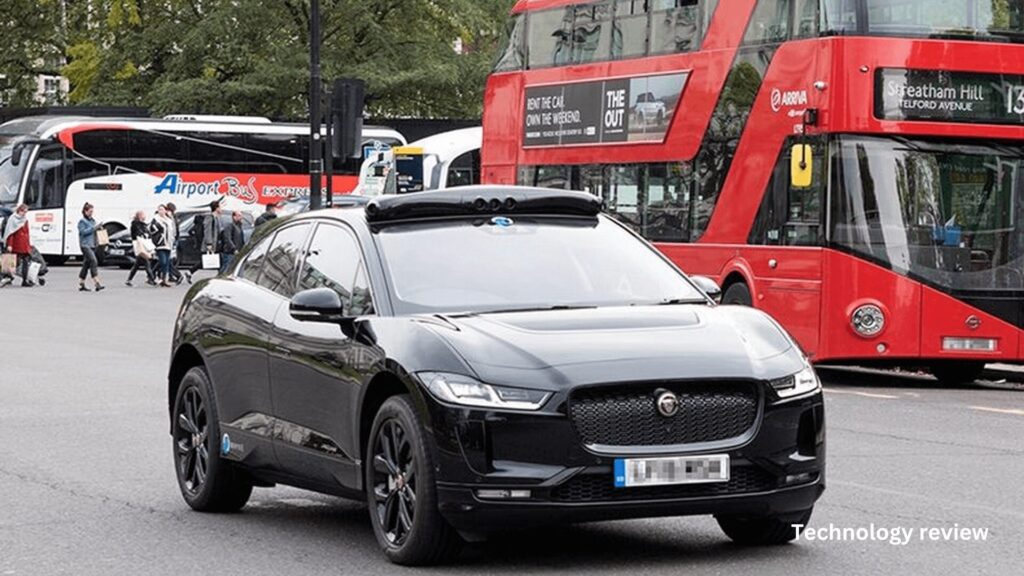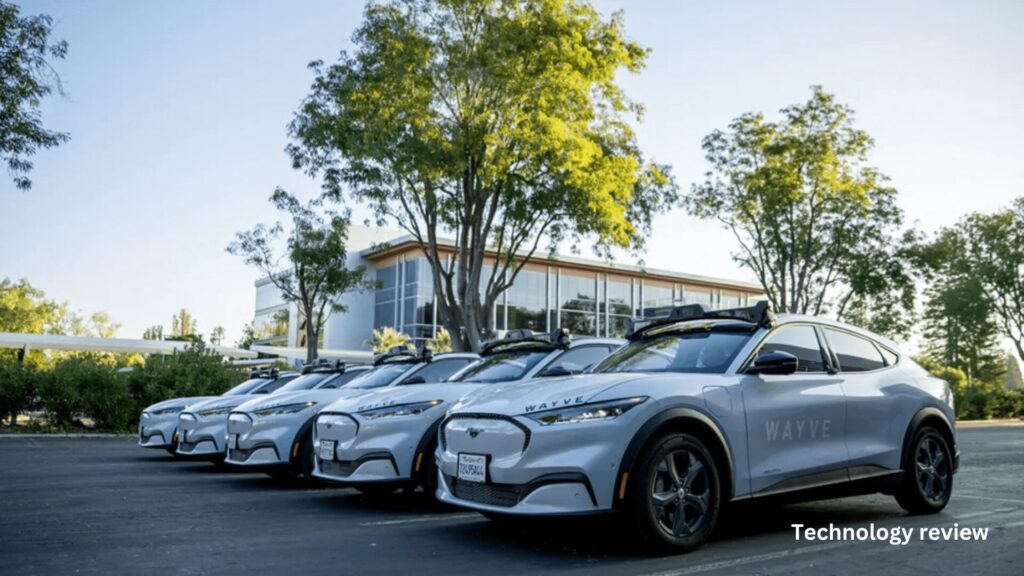Wayve’s Autonomous Cars: The UK-based autonomous vehicle startup, Wayve, is taking a bold step forward in its quest to revolutionize driverless technology. After mastering the intricate streets of London, Wayve has announced plans to test its autonomous driving systems in San Francisco, marking a significant milestone in its development. However, this expansion presents a new challenge for the company: transitioning its AI from driving on the left side of the road in the UK to the right side in the US.
Driving on the opposite side of the road might sound simple, but it’s far more complex than it appears. This challenge will be a true test of Wayve’s approach to self-driving technology, which focuses on end-to-end learning. With the company’s impressive $1 billion funding round and partnerships with giants like Uber, Asda, and Ocado, all eyes are on how Wayve’s tech will adapt to US driving conditions.
The Complexity of Switching Road Sides
One of the most intriguing aspects of Wayve’s move to the US is how its AI will handle driving on the right side of the street. As Wayve’s vice president of software, Silvius Rus, explains, this transition is not trivial, even for humans. Rus, who recently experienced driving on the left side for the first time in the UK, admits that the difference in how you view the road and navigate turns can be disorienting.
For a human driver, making the switch can be confusing, but for an AI system that has been trained exclusively on left-side driving, the challenge is even greater. Unlike many of its competitors, Wayve’s AI is not programmed with rigid instructions for different driving conditions. Instead, it relies on a more flexible learning approach that must adapt to new environments, including the fundamental shift from left- to right-side driving.

Wayve’s Unique End-to-End Learning Model
Wayve stands out in the crowded autonomous vehicle market with its innovative end-to-end learning model. Rather than relying on separate modules to handle tasks like obstacle detection and route planning, Wayve’s approach integrates all driving functions into a single, cohesive model. This model learns from data collected through camera footage, driver feedback, and simulations, creating a more general-purpose system.
This methodology has already proven successful in the UK, where Wayve has shown its AI can navigate multiple cities without being retrained for each location. In London, the system has learned to handle diverse traffic situations, from congested streets to unpredictable weather conditions. The real question now is whether this adaptability will extend to the right-side driving required in the US.
Testing in San Francisco: A New Frontier
Wayve’s expansion into San Francisco is a critical test of its technology. San Francisco presents a vastly different driving environment from London, with its own unique set of challenges, including different road rules, infrastructure, and driving culture. But perhaps the biggest hurdle will be retraining the AI to drive on the right.
Wayve’s approach, according to Rus, is not to program the system to handle specific driving rules but to teach it to learn through experience. In the UK, for example, the AI wasn’t explicitly taught to drive on the left; it simply learned by observing and practicing in left-side driving environments. This same approach will be applied in San Francisco, where the system will need to quickly learn and adapt to right-side driving.
How Wayve’s AI Adapts to New Challenges
What sets Wayve apart from other autonomous vehicle companies is its ability to adapt its AI to new environments without needing extensive retraining. This adaptability is the core of Wayve’s confidence as it enters the US market. The company has already demonstrated that its model can adjust to new UK cities, suggesting that the switch to right-side driving may be less of a challenge than it appears.
However, the team at Wayve is not leaving this to chance. To ensure the transition is smooth, the company is using detailed simulations to retrain its AI. These simulations replicate various driving scenarios the AI might encounter in San Francisco, allowing it to practice navigating right-side roads before hitting the actual streets.
Simulating Complex Driving Scenarios
Wayve’s secret weapon in preparing for the US market is its PRISM-1 simulation tool. This advanced technology can recreate 3D street scenes based on video footage, providing the AI with a virtual environment in which to learn. By running through a wide range of scenarios—such as unprotected turns, intersections, and navigating around pedestrians—the AI gets a chance to fine-tune its driving skills in a risk-free setting.
One key challenge for the AI will be learning the differences between left-side and right-side unprotected turns. In the UK, unprotected turns are made to the right, while in the US, they’re made to the left. Wayve’s team is closely monitoring how the AI handles these differences in simulation, watching for signs that the model might need extra training in certain areas. Wayve’s Autonomous Cars.
Competitors and the Race for Full Autonomy
Wayve’s move to the US comes at a time of intense competition in the autonomous vehicle industry. Established players like Cruise, Waymo, and Tesla have already made significant inroads in the US market, each offering its own approach to self-driving technology. Waymo, for instance, is now providing 100,000 robotaxi rides a week across cities like San Francisco, Los Angeles, and Phoenix, while Tesla’s driver-assistance technology continues to dominate headlines. Wayve’s Autonomous Cars.
Despite the challenges, Wayve is confident that its general-purpose AI will give it an edge over its rivals. Unlike Tesla’s driver-assistance system, which requires extensive human oversight, Wayve’s AI is designed to eventually achieve full autonomy, with minimal human intervention.
Addressing Safety Concerns in the Industry
Safety is a significant concern in the autonomous vehicle industry, especially given recent incidents involving companies like Cruise and Tesla. Cruise, for example, has faced backlash after its cars caused accidents on the streets of San Francisco, leading to layoffs and heightened scrutiny. Tesla, too, has come under fire for crashes involving its driver-assistance technology, prompting federal investigations.
Wayve is acutely aware of these challenges and is taking a cautious approach as it enters the US market. The company plans to start by offering an advanced driver-assistance system (ADAS) in San Francisco, similar to Tesla’s technology but with more emphasis on safety and adaptability. This system will serve as a stepping stone toward full autonomy, with the goal of gradually phasing out human oversight as the AI becomes more capable. Wayve’s Autonomous Cars.
The Future of Autonomous Vehicles
As Wayve looks to the future, it sees its AI technology extending far beyond cars. Rus envisions a future where Wayve’s AI controls a wide range of machines, from drones to robots, using the same general-purpose model that powers its autonomous vehicles. “Driving is just the beginning,” says Rus. “What we’re building is an embodied AI that can eventually operate any type of machine.”
In the meantime, Wayve remains focused on perfecting its technology in the US market. By starting with ADAS and gradually moving toward full autonomy, the company aims to create a safe and scalable solution for autonomous driving. With its unique learning model and innovative simulation tools, Wayve is poised to make a significant impact in the competitive world of driverless technology.
Conclusion: The Road Ahead for Wayve
Wayve’s expansion into the US is a bold move that will test the limits of its AI-driven approach to autonomous vehicles. While the challenge of switching from left-side to right-side driving is significant, the company’s unique end-to-end learning model offers hope that it can successfully navigate this transition. Wayve’s Autonomous Cars.
As the autonomous vehicle industry continues to evolve, Wayve’s general-purpose AI has the potential to set it apart from the competition. By focusing on learning and adaptability, rather than rigid programming, Wayve is positioning itself as a leader in the race toward fully autonomous vehicles. Whether it can outpace rivals like Waymo, Cruise, and Tesla remains to be seen, but one thing is clear: Wayve is betting big on the future of AI-driven transportation.



